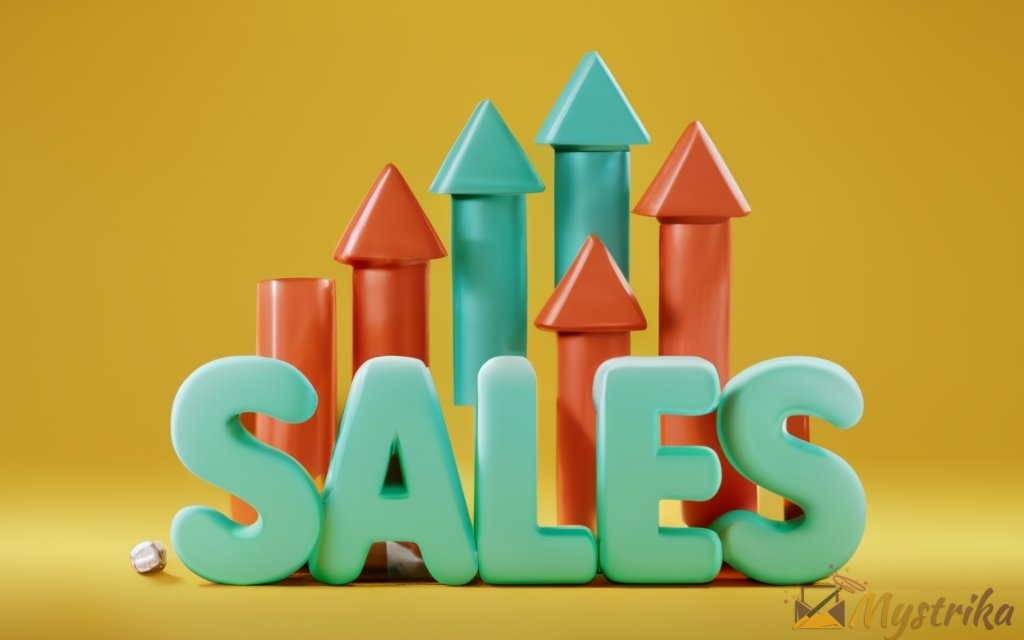In today’s highly competitive business landscape, sales leaders must continually evolve strategy to hit revenue goals. This comprehensive guide explores optimizations across prospecting, training, technology, and processes to maximize sales results in 2023.
Learn proven frameworks for building skills, generating leads, leveraging sales tech, and instilling an outcome-focused culture guided by hard metrics. Expert tips help tackle obstacles like long sales cycles and poor lead quality ramp up performance.
Master the fundamentals with this practical guide to sales success.
Understanding Sales Success Rates and Statistics
Having a strong grasp of sales success rates and statistics is crucial for optimizing your sales strategy in 2023. By analyzing hard data around closing rates, email effectiveness, and lead generation, you can set accurate performance benchmarks and pinpoint areas for improvement.
Cold Email Statistics and Success Rates
Cold email remains one of the top lead generation tactics for sales teams. Understanding stats around open, response, and close rates can help optimize cold outreach. Here are some key benchmarks:
- Average open rate: Around 20-30% open rate is average for cold emails. Effective subject lines, targeted personalization and good sender reputations can help improve open rates.
- Average response rate: For cold outreach, 5-10% is an average response rate. Testing different value propositions and calls-to-action can increase responses.
- Sales qualified lead conversion: Roughly 13% of cold email leads typically convert to SQLs. Following up promptly and nurturing leads boosts conversions.
- Average close rate from cold email: About 3% is an average final conversion rate from a cold email to closed deal. Effective workflows and sequenced follow-ups after the initial outreach drive this number upwards.
Average Sales Close Rates Across Industries
Close rates vary significantly across industries, company sizes and deal sizes. Here are some benchmarks to provide context:
- IT/Software: Roughly 11-15% close rate.
- Manufacturing: Around 25-30% close rate.
- Insurance: Approximately 40% close rate.
- Higher education: Around 15% close rate.
Within your industry, segment close rates by deal size, product line and other factors to set accurate targets.
Examining Sales Closure Rates
A sales closure rate indicates the percentage of proposals or deals that convert to closed/won. A 50% closure rate means half of all sales opportunities result in closed deals.
Closure rate benchmarks also vary by industry:
- Financial services: 65-70% closure rate
- Enterprise software: 20-30% closure rate
- ecommerce: 35-40% closure rate
Analyze closure rates over time to identity progress. An increasing closure rate indicates a maturing sales process. A decreasing rate signals issues like poor lead quality, inadequate pipelines or sales skills gaps needing attention.
B2B Door-to-Door Sales Success Rates
Door-to-door sales remains an important channel for some B2B products, like industrial supplies. Success rates vary based on offer, targeting and sales ability.
Some benchmarks for in-person B2B prospecting:
- Contact rates: 20-30% is excellent for establishing first contact.
- Presentations delivered: A 10-15% presentation rate is solid for an experienced door-to-door sales team.
- Deal closure: 1-3% deals closed per day is average for door-to-door sales.
With good territory planning and persistent follow-up, in-person sales can become very profitable.
How Lead Generation Statistics Inform Strategy
Examining lead generation stats helps sales leaders understand customer behaviors and fine-tune strategy:
- Lead nurturing boosts conversions 78%: Extended nurturing and built trust leads to more sales.
- 50% of B2B leads are sales-ready: Sufficient MQLs prevent rep burnout on unqualified leads.
- Imagine you are selling SaaS products: Given only 30% of SaaS trial users convert, your strategy should focus on driving trials of key features early in the sales process.
Crunching the numbers provides data-backed guidance for everything from hiring to messaging to technology budgets. Statistical analysis pays dividends.
By regularly examining closure rates, email effectiveness, and lead generation benchmarks, sales organizations gain an accurate picture of performance. Data-driven insights enable leaders to refine strategy for improved results.

Sales Strategy Fundamentals
Mastering sales strategy fundamentals is critical for success in 2023. Let’s explore proven approaches for boosting deal closure, generating more leads, leveraging technology, building team skills and developing results-driven strategies.
100 Essential Sales Tips for Closing More Deals
Here are 100 impactful tactics for winning more business:
Prospecting Tips
- Research accounts before making contact to personalize outreach.
- Take time to identify key challenges and pain points.
- Establish authority by showcasing expertise and thought leadership.
- Lead with value rather than making a sales pitch.
Presentation and Demo Tips
- Keep presentations concise, focused on addressing needs.
- Make extensive use of case studies and testimonials.
- Invite key stakeholders, not just economic buyers.
- Provide risk-reversal guarantees.
Handling Objections
- Don’t be defensive – welcome objections.
- Restate to confirm you understand concerns.
- Provide facts, data and proofs to address issues.
- Offer a concession to overcome a sticking point.
Closing Tactics
- Summarize core needs matched to your solution.
- Create urgency with discounts or deadlines.
- Ask closing questions to nudge commitment.
- Offer trial periods to lower barriers.
This list just scratches the surface. Identify techniques that align to your business and refine them over time.
Examining the UP Sales System
The UP sales methodology is based on three principles – Uncover needs, Prove your value, and Progress the deal.
Key elements include:
- Asking incisive questions to uncover client challenges.
- Sharing relevant cases and data to prove you can solve issues.
- Moving the deal forward with follow-ups and nudges towards commitment.
UP provides a simple, structured framework for sales conversations. When combined with account research and objection handling, it becomes a powerful system.
Make It Rain: Implementing Effective Lead Generation
Make It Rain is an approach to continually generating a high volume of sales leads. Tactics include:
- Casting a wide net: Pursuing leads across multiple channels to drive volume – cold calling, email, social media, tradeshows, etc.
- Delivering value upfront: Providing useful content and resources builds trust and credibility with prospects.
- Persisting through rejection: Experiencing hang ups and ignored messages is normal. Keep pushing forward.
- Following structured outreach cadences: Systematically contacting prospects and moving them through a defined workflow.
With sufficient volume and persistence, this lead gen strategy delivers results. But it requires focus and discipline in implementation.
HubSpot offers powerful sales automation and workflow tools, including:
- Email tracking to monitor outreach effectiveness.
- Lead scoring to identify sales-ready prospects.
- Meeting scheduling integration with calendars.
- Sequences for sending drip campaigns.
- Reporting to analyze pipeline health.
Key features like Sidekick also integrate CRM data directly in email for quicker, more personalized outreach.
Developing Sales Strategies Focused on Results
The key to developing winning sales strategies is staying laser-focused on tangible results. Outcome-driven frameworks for goal-setting include:
- Objectives and Key Results (OKRs): Set specific quantitative targets and benchmark progress. Eg. Increase sales appointments by 20% quarter-over-quarter.
- Lead and deal stages: Establish probability-based phase gates for advancing opportunities.
- Conversion metrics: Determine key rates for optimizing, like lead response rate.
- Sales activity metrics: Track call, email and demo quotas to ensure consistent execution.
With measurable targets established, it’s easier to form strategies, execute and evaluate success.
Building an Effective Lead Generation Strategy
Generating a strong flow of qualified leads is foundational to sales success. Here are tips for getting started:
Define Lead Generation Goals
- Volume of leads needed
- Target conversion rates by stage
- Ideal customer profile parameters
Identify Prospect Sources
- Existing customers and referrals
- Purchased lead lists
- Events, tradeshows and webinars
Experiment with Tactics
- Cold calling and email
- Content syndication and social media
- Paid ads and sponsorships
Create an Outbound Cadence
- Email and call touch sequence
- Automated lead nurturing
- Sales workflow in CRM
Track and Optimize
- Lead quality and quantity
- Cost per lead
- Conversion rates
With a documented lead generation strategy, sales teams can scale pipelines and have greater impact.

Sales Technologies and Tools
Leveraging the right sales tools and technologies can streamline processes, improve visibility and increase rep productivity. Let’s explore some top options:
IKO Sales System Overview
IKO is an end-to-end sales platform combining CRM, email tracking, dialer and more. Key capabilities include:
- Activity tracking and logging across channels
- Intelligent recommendations to guide next steps
- Email integration for tracking and logging outreach
- Voice/VOIP dialing to streamline calling
- Workflow automation for reminders and follow-up
With tools consolidated into a unified workspace, reps maintain context switching less between apps.
Yesware for Email Optimization
Yesware helps sales teams get more from email outreach via:
- Email tracking to monitor opens, clicks and replies
- Templates and sending cadences
- Follow-up reminders on unresponsive leads
- CRM sync to track email performance by campaign
These capabilities boost productivity and provide data to refine outreach approaches for higher response rates.
Sherpa Sales Training Platform
Sherpa is an eLearning platform focused on sales education. Features include:
- On-demand video courses on techniques like social selling, prospecting and presentations.
- Reinforcement through microlearning games and quizzes.
- Skills assessment surveys to benchmark competencies.
- Coaching tools for managers to guide team development.
Early and ongoing training is essential for sales team success.
Other Essential SaaS Tools
Top complements to core sales tech stack include:
- ZoomInfo – Enriches CRM with firmographic data to identify targets.
- Outreach/SalesLoft – Structures complex outreach workflows and cadences.
- Gong.io – Records sales calls for evaluating areas for improvement.
- HubSpot – Consolidates marketing, sales and service tools on one platform.
Getting the Most from Sales Technologies
To maximize value from new sales tools:
- Set up integrations to unify data across systems and eliminate rework.
- Provide hands-on training to build user adoption and proficiency.
- Review analytics regularly to assess what’s working and where changes may be needed.
- Automate repetitive tasks like data entry to improve efficiency.
- Give frequent feedback to align usage with overall sales objectives.
With training and discipline, sales technology investments can deliver exponential returns.
Modern sales tools provide invaluable visibility into prospects and performance while boosting rep productivity. Leaders must take care to select solutions that align to team needs, provide hands-on training, and continually optimize utilization.

Developing Your Sales Team for 2023 Success
Having a skilled, motivated sales team is the most important driver of sustainable revenue growth. Here are tips for continuous development:
Creating a Structured Sales Training Program
A formal training curriculum ensures reps gain required knowledge, including:
- New hire onboarding – Product, ideal customer profiles, objections, competitor prep.
- Ongoing enablement – New feature releases, sales plays, script refinements.
- Skills building – Negotiations, social selling, storytelling, executive presence.
- Management/leadership – Coaching, performance reviews, interviewing.
Training delivery formats might include classroom workshops, webinars, online modules, and one-on-one coaching.
Conducting Regular Skills Assessments
Assessing competencies identifies development needs:
- Sales skills assessments – Quantifying abilities around prospecting, presenting, relationship building.
- Product knowledge quizzes – Gauging how well features, integrations and tech details are understood.
- Mock role playing – Uncovering subtleties through simulated sales scenarios.
- Call monitoring – Listening to live calls reveals issues like stalling or abandoning preferred sales plays.
Perform assessments quarterly or biannually. Use insights to craft personalized development plans.
Fostering a Positive, High-Performing Culture
Leaders shape cultural elements including:
- Values – Integrity, commitment, adaptability, teamwork.
- Norms – Collaborative, data-driven, innovative, competitive spirit.
- Traditions – Contests, outings, unique lingo, celebrations of wins.
With aligned cultural components, the team is empowered to execute the sales vision.
Motivational Strategies and Incentives
Recognition, perks, and competitions can boost energy:
- Gamification – Leaderboards, points, badges for goals achieved.
- Individual rewards – Top performer shoutouts, spot bonuses, gift cards.
- Team rewards – Spiffs for total revenue or reviews generated.
- Informal incentives – Flexible hours, remote work options, office perks.
Balance intrinsic rewards like growth opportunities with extrinsic motivation like compensation.
Hiring Top Sales Talent
Look for three characteristics in reps:
Hunter Mindset
- Tenacious work ethic
- Rejects complacency
- Relentless follow-up
Consultative Approach
- Listens more than speaks
- Asks insightful questions
- Identifies true underlying needs
Relationship Focus
- Likeable and trusting
- Wins through chemistry
- Maintains long-term partnerships
Interview Strategies
Go beyond basic qualifications by using:
- Role playing – Simulate sales scenarios to observe skills firsthand.
- Peer panels – Additional screening from top reps.
- Case studies – Evaluate problem-solving abilities.
Onboarding and Equipping
Help new hires excel by providing:
- Robust training curriculum
- Mentor or “buddy” system
- Ramp period with reduced quota
Investing across the sales recruiting, development and culture pillars compounds over time for standout results.

Optimizing Your Sales Process
As outbound sales becomes more complex, having an efficient, frictionless sales process is essential. Here are tips for maximizing results:
Examining Pain Points and Inefficiencies
Common problem areas to assess include:
- Excessive manual work for data entry or CRM updates
- Difficulty tracking email and call activity spread across apps
- Too much time spent on unqualified leads
- Sales questions getting stuck in internal escalation loops
- Follow-ups and tasks falling through the cracks
Surveying salespeople reveals frontline frustrations. Review analytics for indications like long sales cycles. Pinpointing pain points lays the foundation for improvement.
Streamlining Workflows to Improve ROI
With pain identified, streamline inefficient workflows:
- Combine tools into a consolidated sales stack vs. jumping between disjointed apps.
- Automate repetitive tasks like sending follow-up sequences.
- Realign hand-offs between teams to limit lead lag time.
- Simplify internal processes removing unnecessary sign-offs or steps.
Continuous optimization achieved via small fixes compounds over time.
Implementation Planning and Execution
Methodically orchestrate process changes:
- Audit and analyze – Map existing workflows, identify pain points.
- Redesign streamlined flows – Eliminate bottlenecks.
- Phase rollout – Pilot changes, gather feedback, then expand.
- Train reps – Ensure understanding of new expectations and tools.
- Iterate and improve – Fine-tune based on adoption and outcomes.
With careful coordination, new optimized processes become business as usual.
Tracking KPIs and Iteratively Improving
Ongoing tuning requires tracking key metrics like:
- Lead response rate – Interest and engagement
- Sales cycle length – Timeframe from lead to close
- Activity rates – Calls made, emails sent per rep
- Conversion rates – SQL and close rates by campaign source
As KPIs improve, identify what is working and push further. If metrics plateau or regress, reassess and pivot approaches accordingly.
Sales Process Innovation
Emerging technologies open new possibilities for sales optimization:
- AI for predictive lead scoring – Identify high propensity accounts.
- Automated data capturing – Streamline manual data entry.
- Omnichannel engagement – Meet prospects where they prefer – chat, text, social media messaging.
- Hyper-personalization – Contextually relevant outreach through analytics.
- Lifecycle relationship management – Holistic tracking beyond a single sale.
The future of sales promises more efficient and mutually beneficial buyer relationships.
By applying innovation, analytics and continuous improvement, sales organizations can realize new levels of go-to-market performance.
## Key Takeaways and Next Steps
Let’s recap the core concepts covered for optimizing sales strategy and execution:
Summary of Sales Strategy Best Practices
- Leverage sales statistics and benchmarks – Set realistic targets based on hard metrics and trends.
- Take a systematic approach – Follow proven frameworks like lead gen strategies and sales methodologies.
- Make sales training a priority – Ongoing learning develops individual skills and team culture.
- Implement the right technology – Consolidate tools and automate to boost productivity.
- Continuous process optimization – Improve through iterations driven by data and feedback.
- Maintain outcome focus – Track quantifiable results, not just activity, to evaluate and guide strategy.
Following these fundamentals generates consistent high-performance.
Overcoming Common Obstacles
When executing strategies, expect challenges like:
- Poor lead quality – Mitigate via multi-channel sourcing and lead grading.
- Long sales cycles – Accelerate through targeted prospecting, effective nurturing, urgency creation.
- Lack of management support – Rally leaders by demonstrating potential ROI. Start small, highlight quick wins.
- Insufficient enablement – Prioritize formal onboarding and ongoing training to build competency.
- Sales tech overload – Streamline stack to essentials. Phase rollout and train to drive adoption.
With preparation, obstacles become surmountable.
Developing an Optimization Roadmap
A plan for incremental improvement might address:
- Q1 – Audit sales processes, tools and metrics. Build training curriculum.
- Q2 – Roll out new sales methodology. Add coaching and call monitoring.
- Q3 – Implement new CRM. Establish sales technology standards and integrations.
- Q4 – Refine analytics with additional KPI tracking. Expand training content.
Timing and details vary by organization. But improvement is continual.
Maintaining Momentum
Make elevated performance stick by:
- Celebrating wins to reinforce behaviors
- Establishing sales competitions and spiffs
- Tracking and sharing metrics to demonstrate impact
- Recognizing top performers as role models
- Automating as much as possible to embed changes
With a results-driven culture, teams don’t regress. They accelerate.
In dynamic markets, sales strategy must evolve continuously to drive results. Following the guidance outlined equips teams to exceed revenue goals in 2023 through skill mastery, operational excellence and focus on the metrics that matter most.

Key Takeaways
Optimizing sales strategy and performance requires focus across multiple dimensions:
- Leverage sales statistics & benchmarks to set realistic targets and effectively allocate resources. Regularly analyze conversion rates, win rates, and lead generation KPIs.
- Implement proven sales frameworks like the UP methodology to maintain consistency amidst change. Structure and discipline drive results.
- Prioritize sales enablement and training to build individual skills and team culture. Skills assessment and coaching compound over time.
- Consolidate sales technologies for efficiency and visibility. Integrate tools, provide extensive training, and track usage data to maximize value.
- Continually optimize processes guided by data and user feedback. Take an agile approach with incremental fixes and enhancements.
- Maintain an outcome-driven culture by tracking quantifiable results, recognizing top performers, and embedding changes through automation.
With focus across these areas, sales organizations can accelerate revenue growth and exceed targets in 2023. The journey requires commitment but yields exponential returns over time.
Frequently Asked Questions
What are some key sales metrics I should be tracking?
Important metrics to track include:
- Lead response rate
- Sales cycle length
- Lead conversion rates by channel
- Sales activity rates like calls and emails per rep
- Win rates by deal size, product, or region
- Customer acquisition costs
How do I build an effective sales training program?
Core components of a sales training curriculum include:
- Onboarding for new hires covering products, pitching, and objections
- Ongoing enablement as offerings evolve
- Skills building workshops focused on negotiations, social selling, etc.
- Management/leadership development for coaching and recruiting
Delivery formats might include online modules, workshops, coaching, and microlearning.
What characteristics should I look for when hiring salespeople?
Top salespeople often share qualities like:
- Tenacity and work ethic
- Consultative approach to identifying needs
- Ability to build relationships and rapport
- Rejecting complacency, remaining competitive
Assess for these via roleplaying, peer panels, and evaluating problem-solving skills.
How can I motivate my sales team?
Motivational best practices include:
- Public recognition of top performers
- Contests, spiffs, and gamification tied to goals
- Spot bonuses or small frequent rewards
- Intrinsic motivators like growth opportunities
- Flexibility with remote work options
What sales methodology do you recommend?
Proven methodologies include MEDDIC, Challenger, SPIN, and Sandler. We suggest evaluating options and choosing one that aligns to your business. Then adapt it over time rather than constantly switching models.

